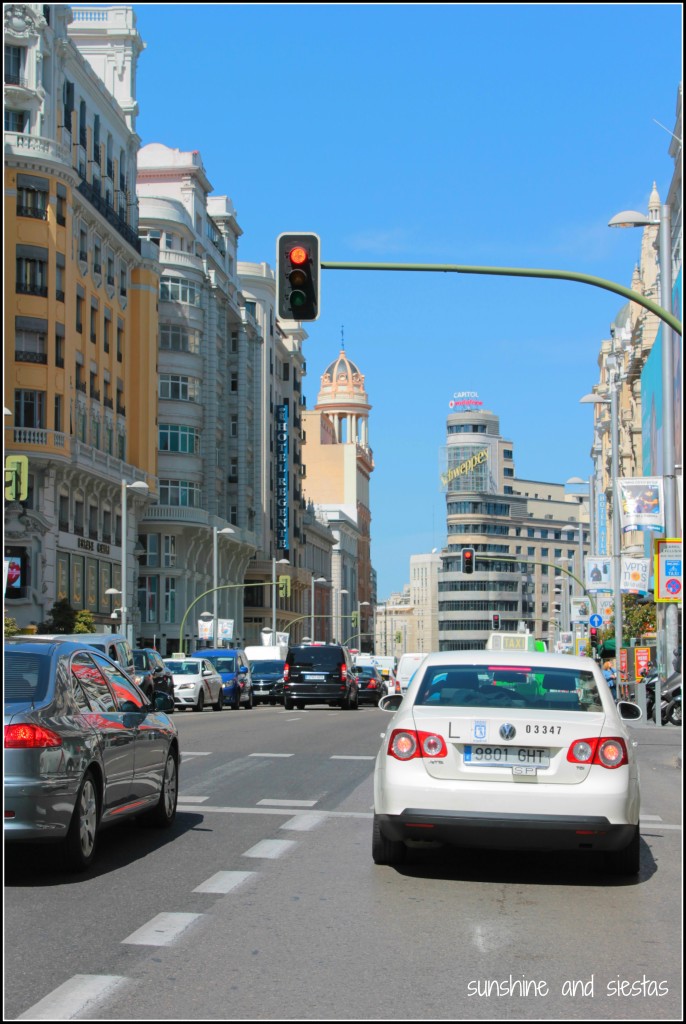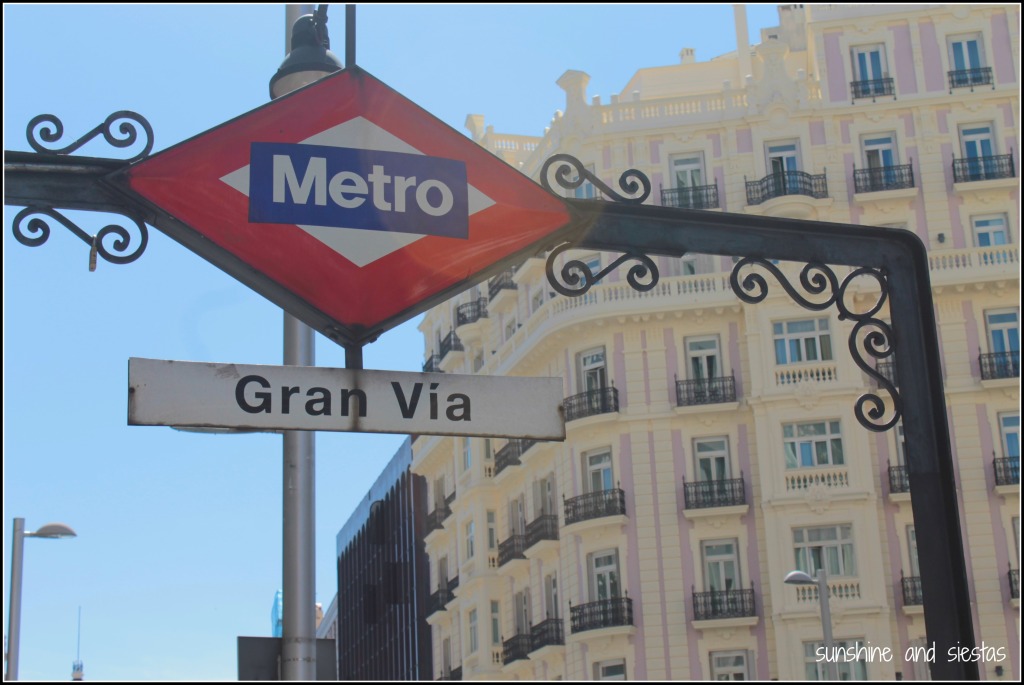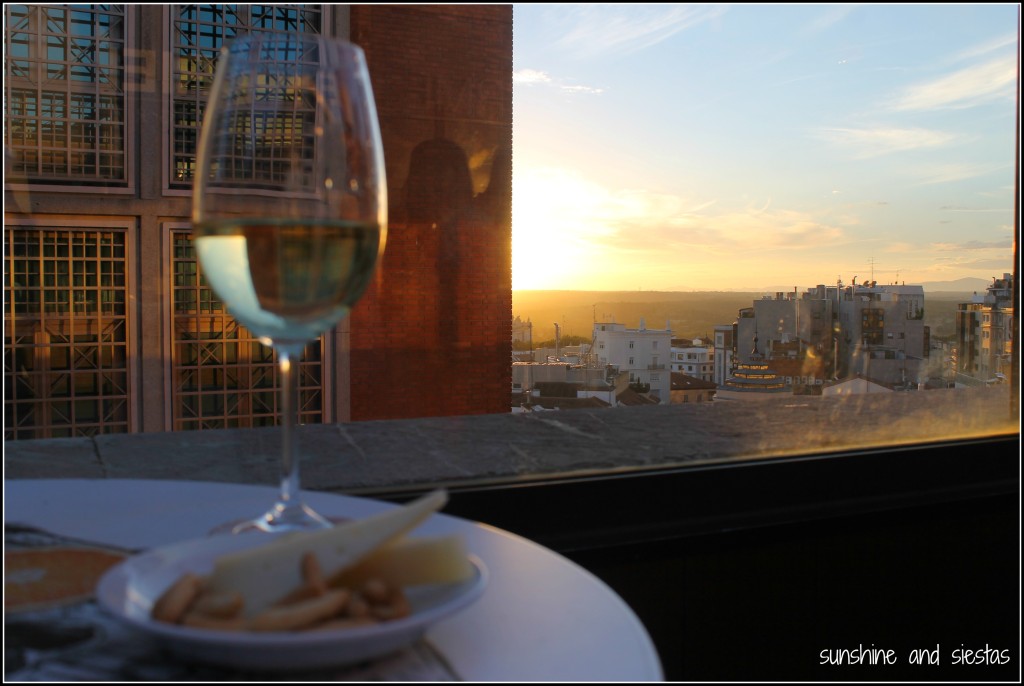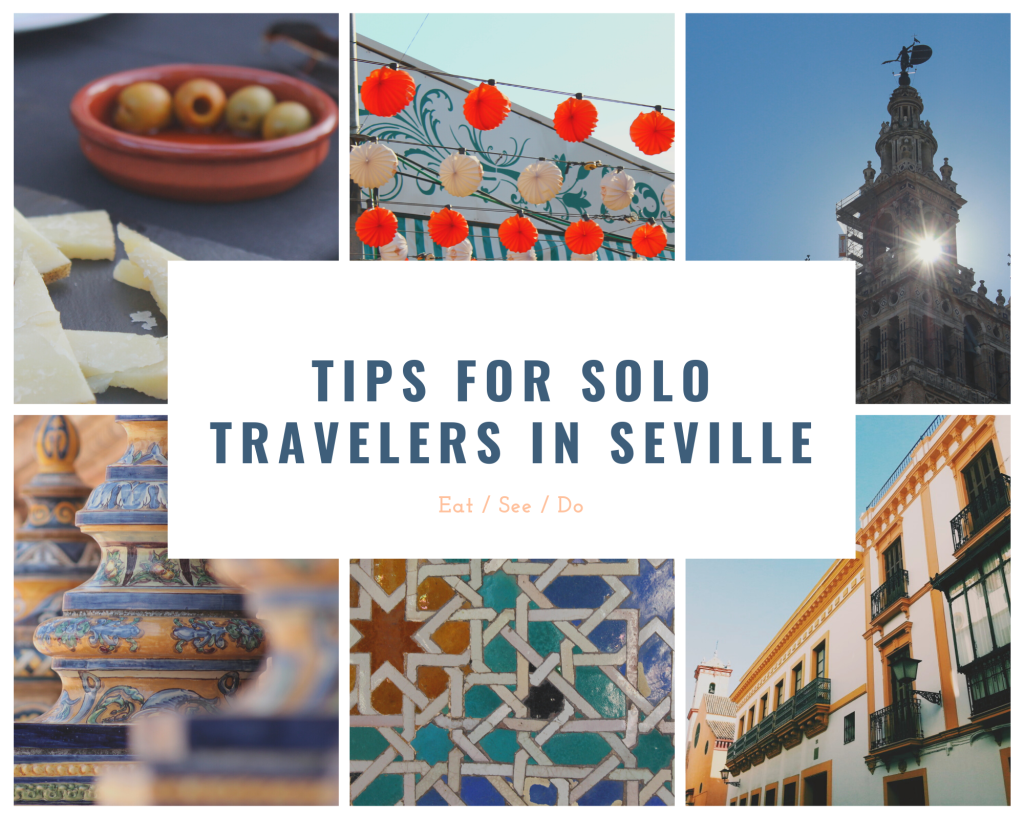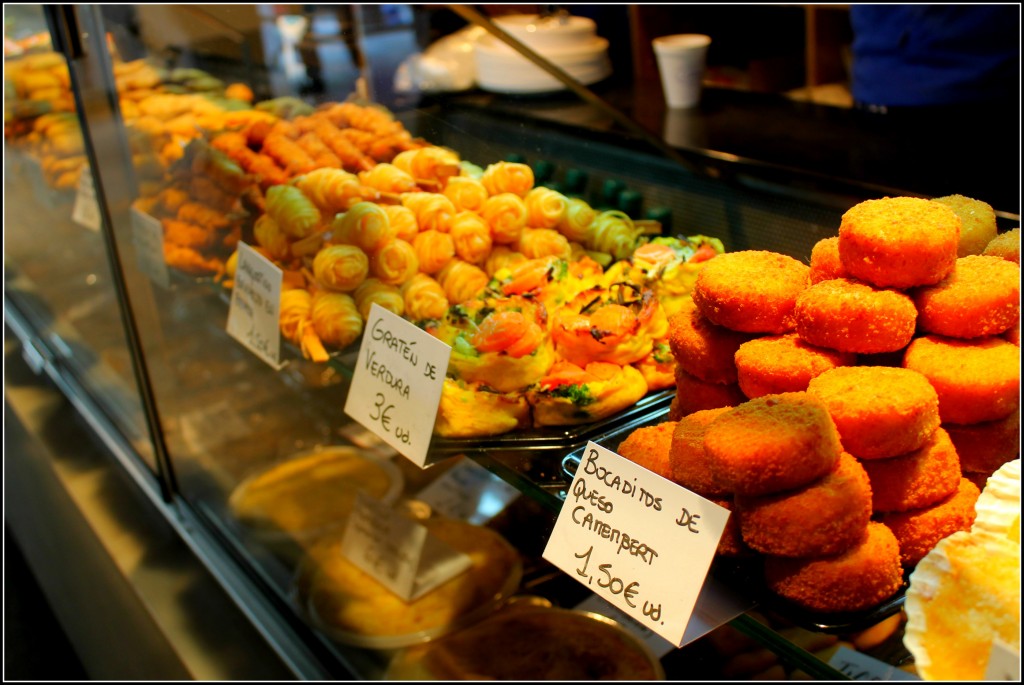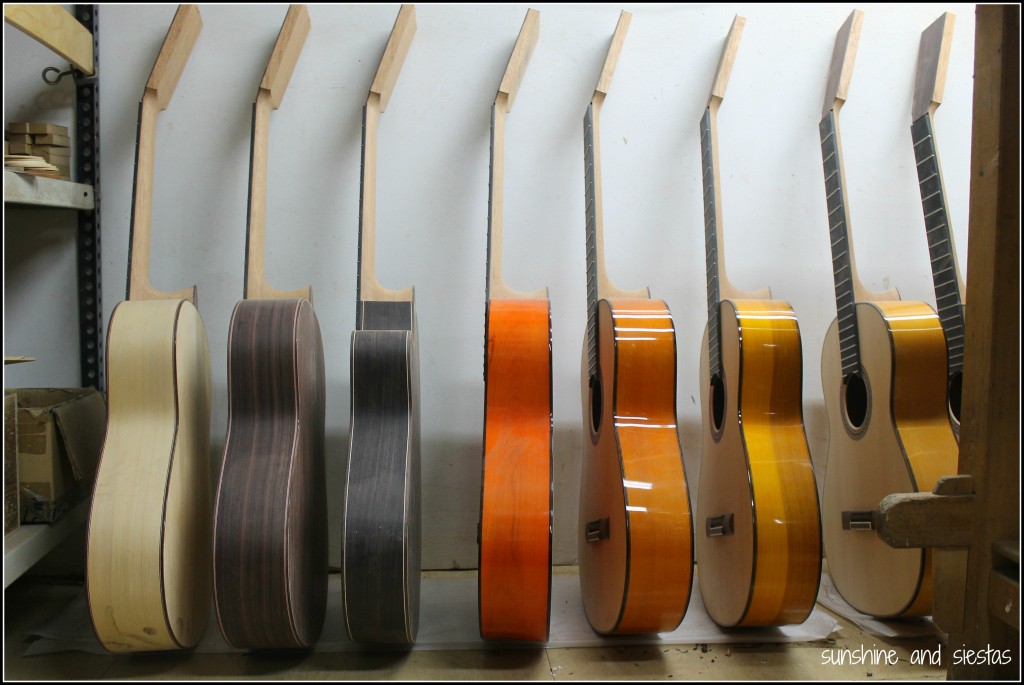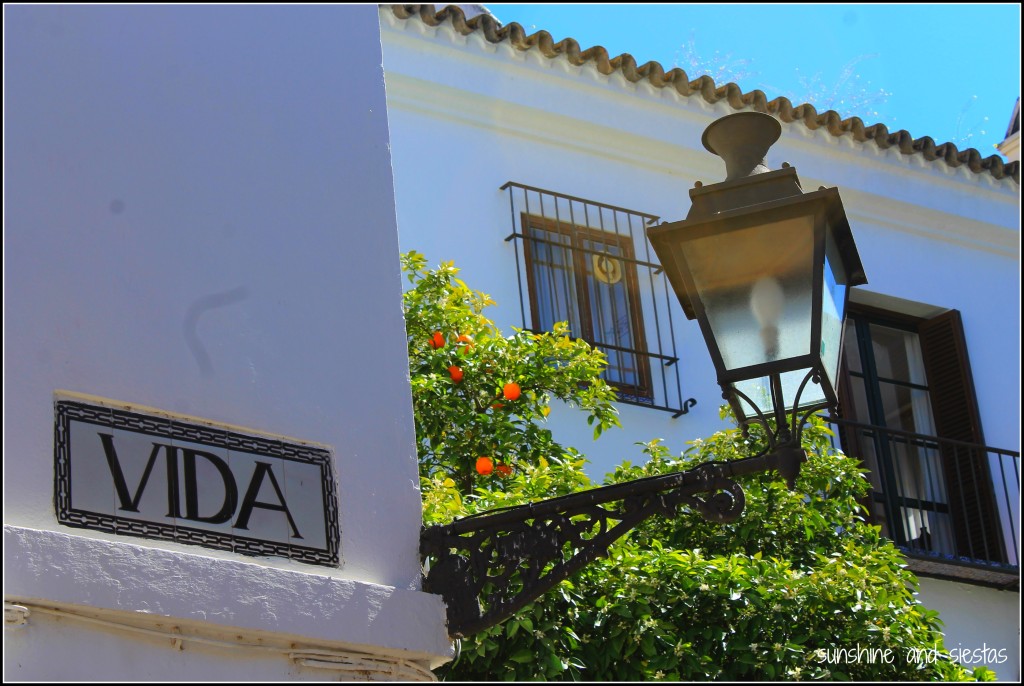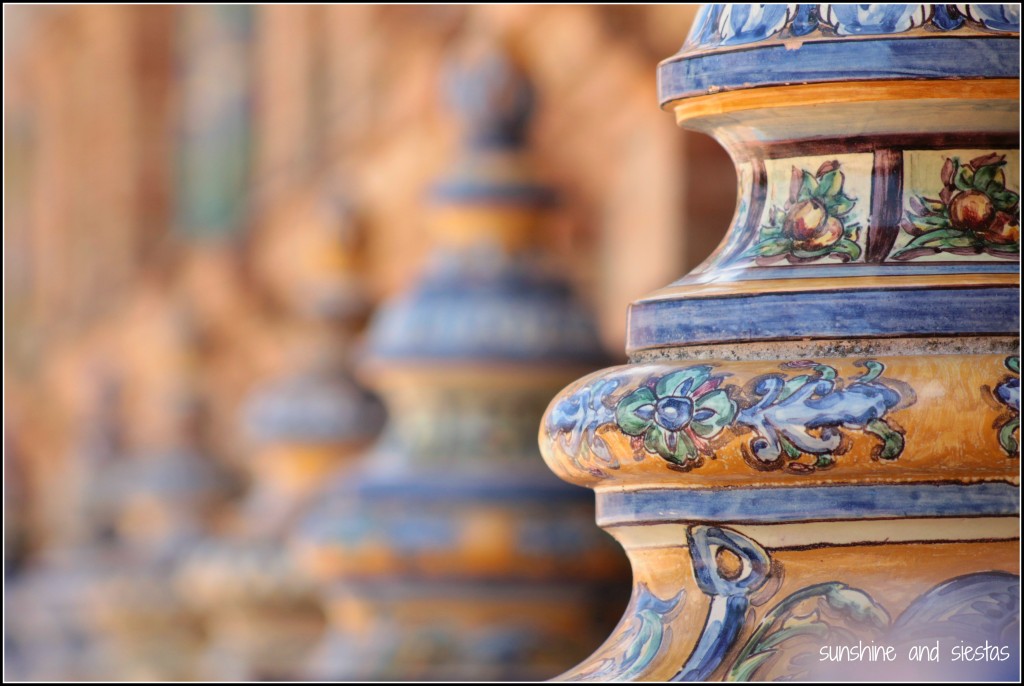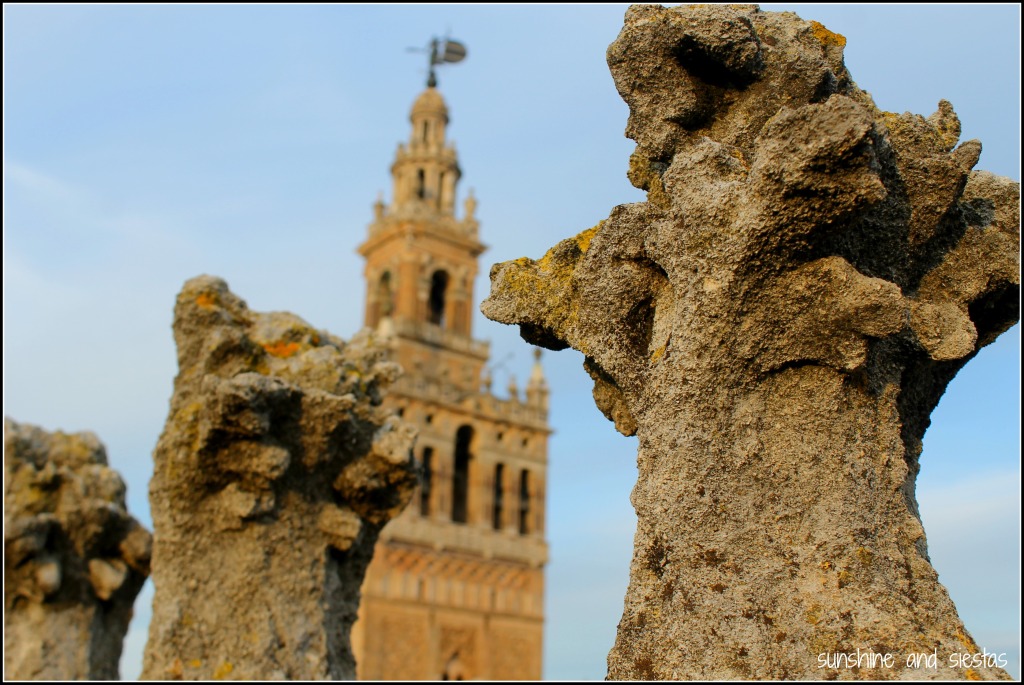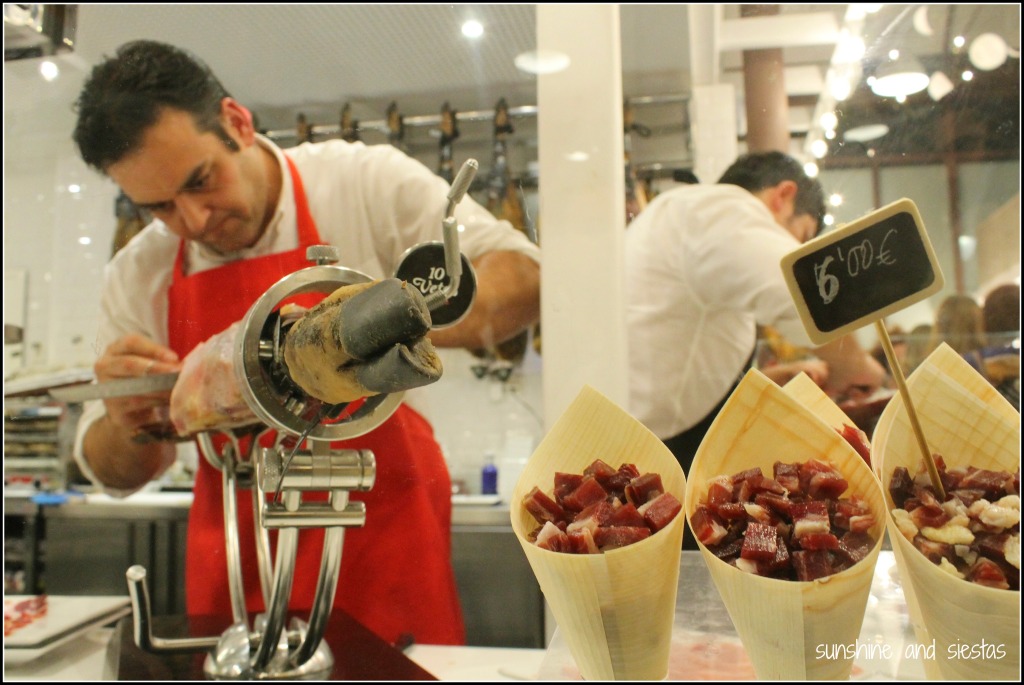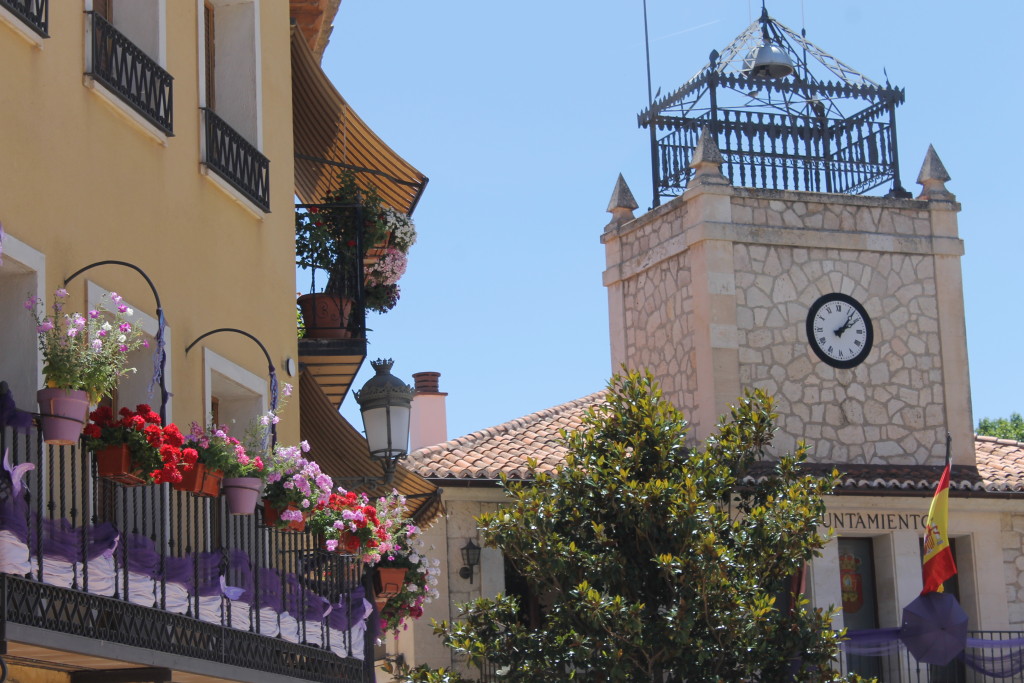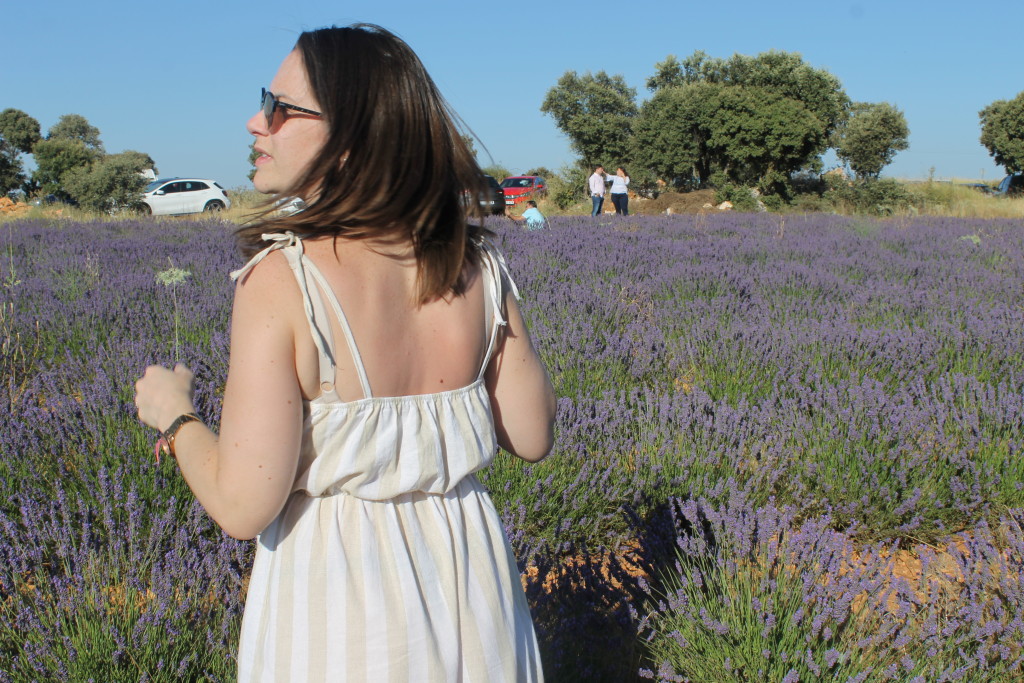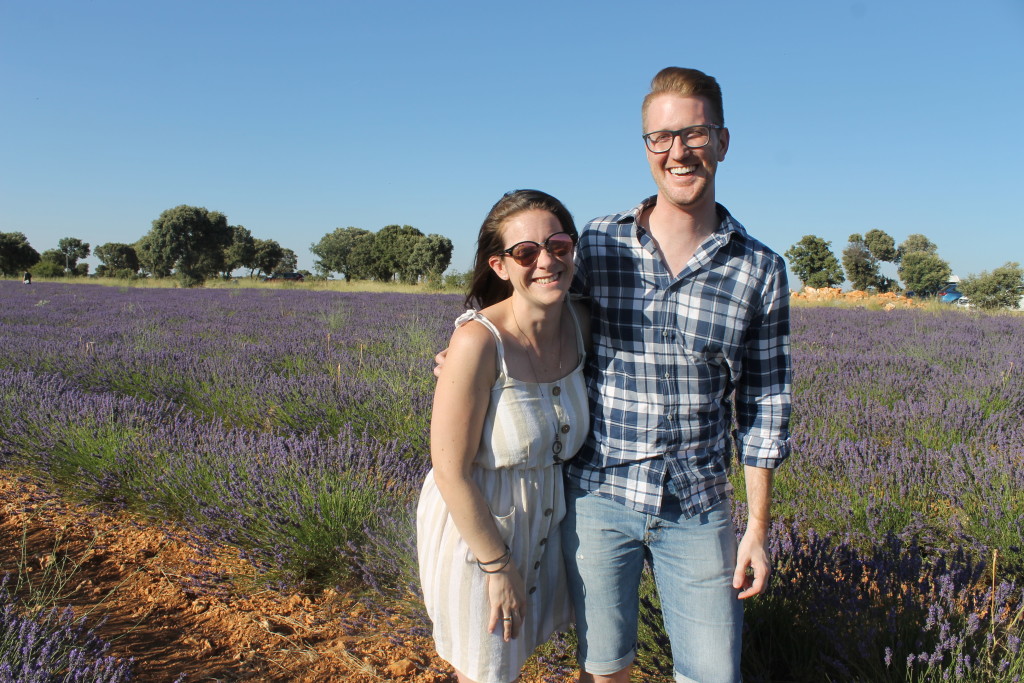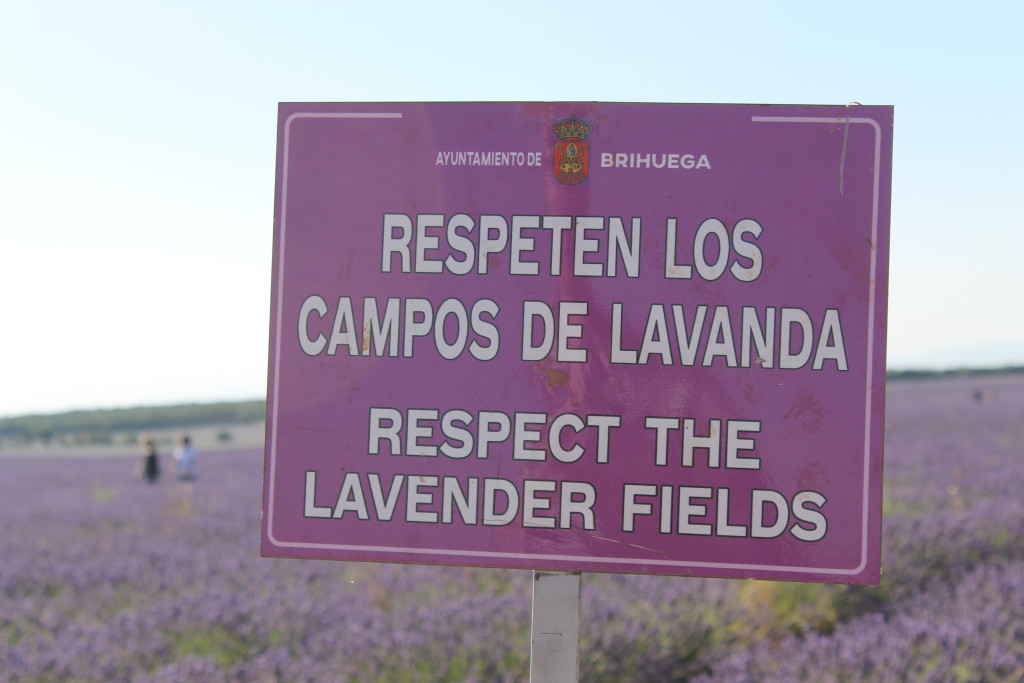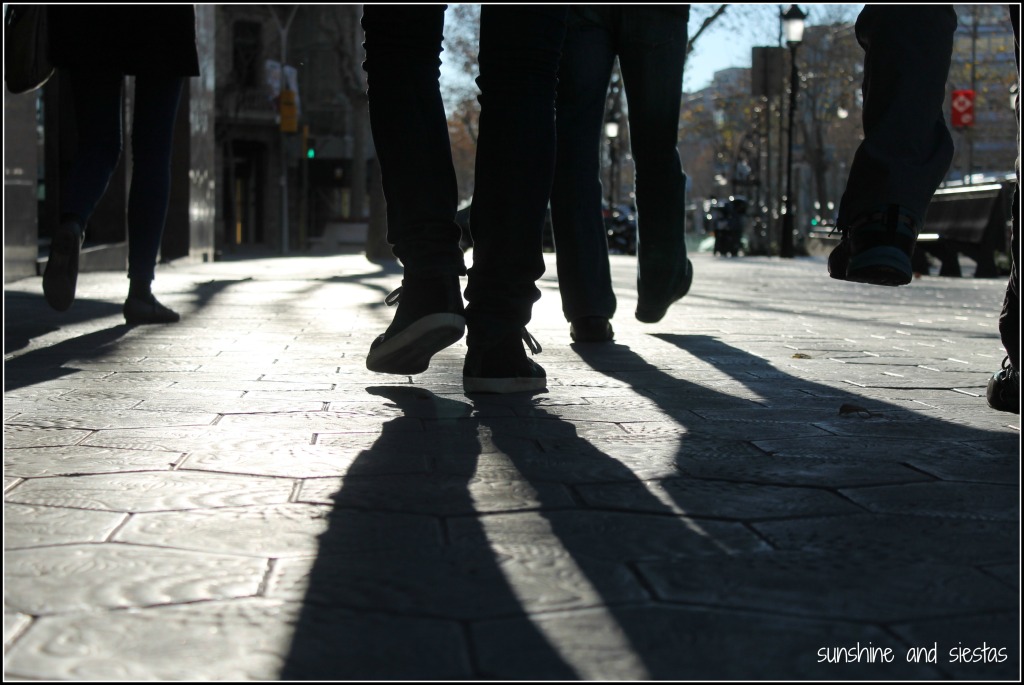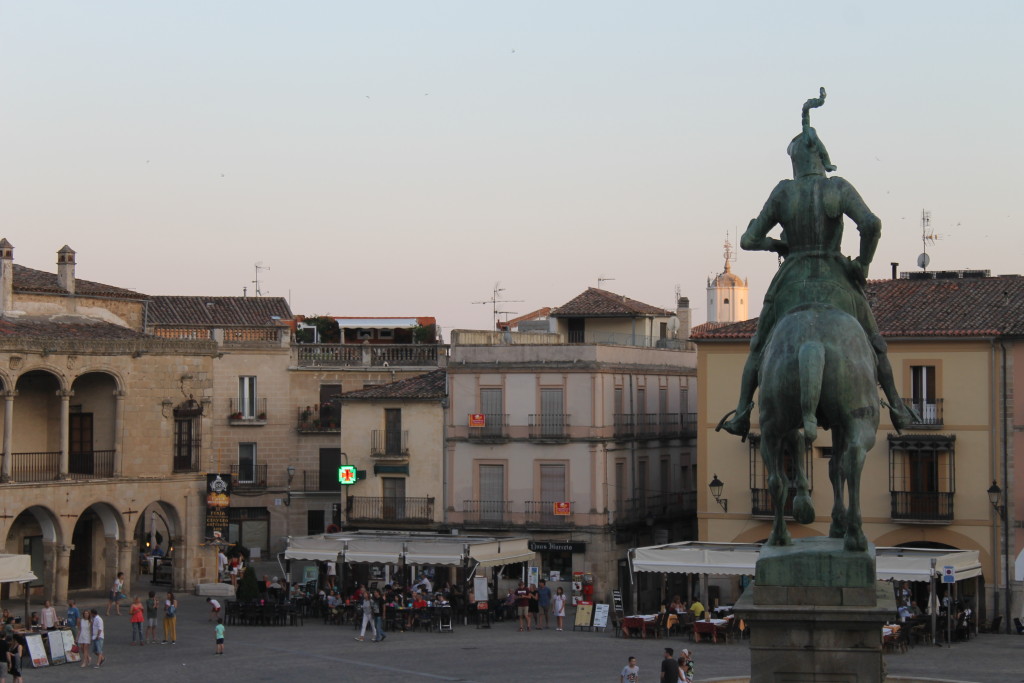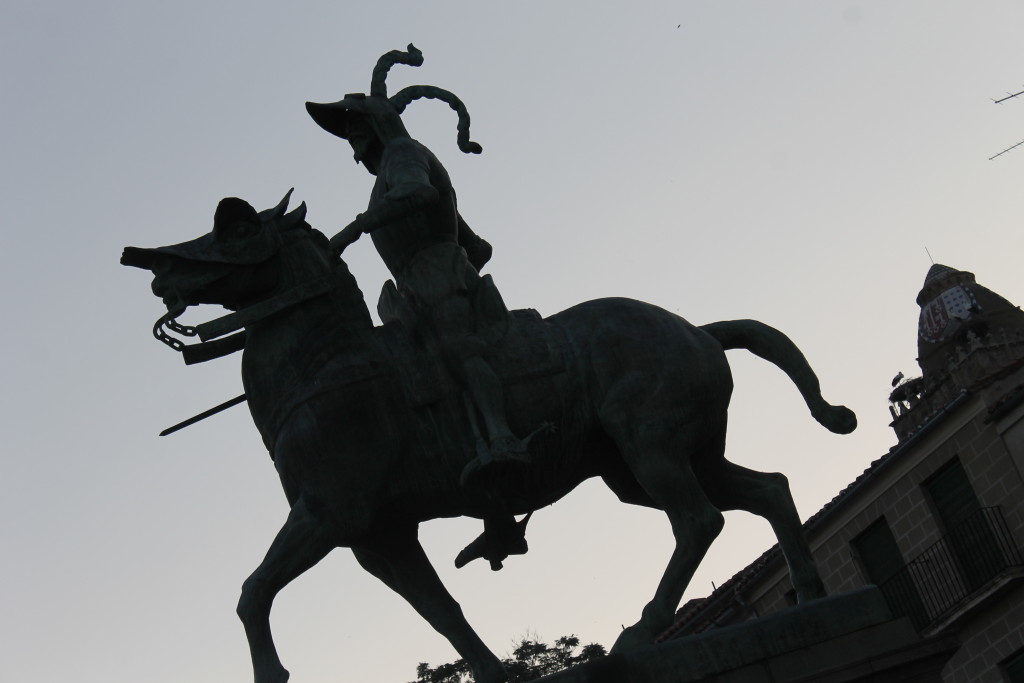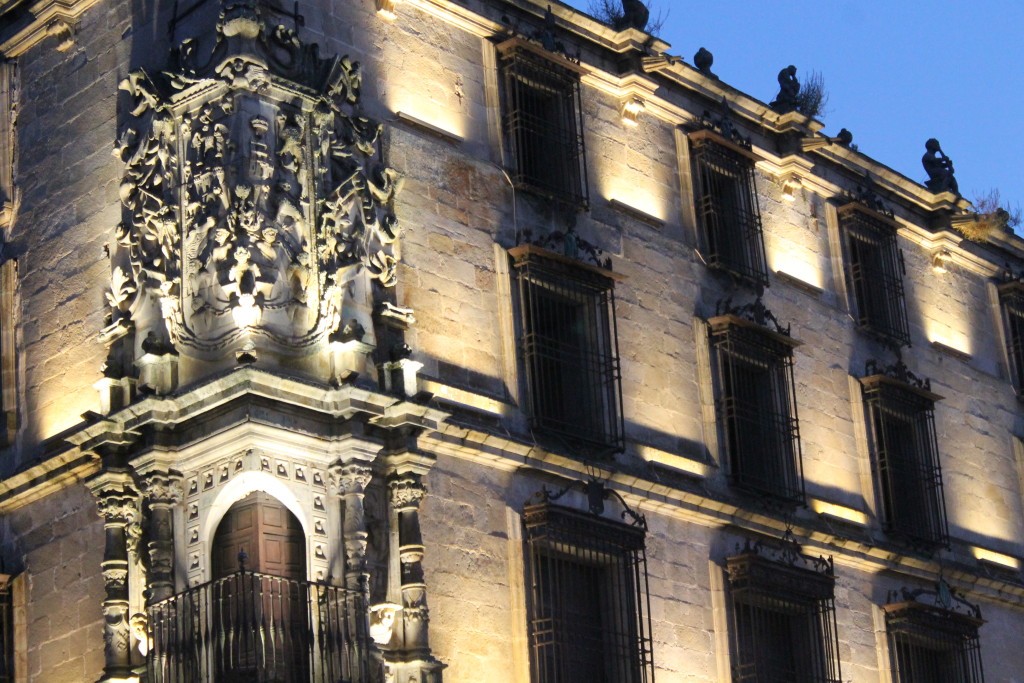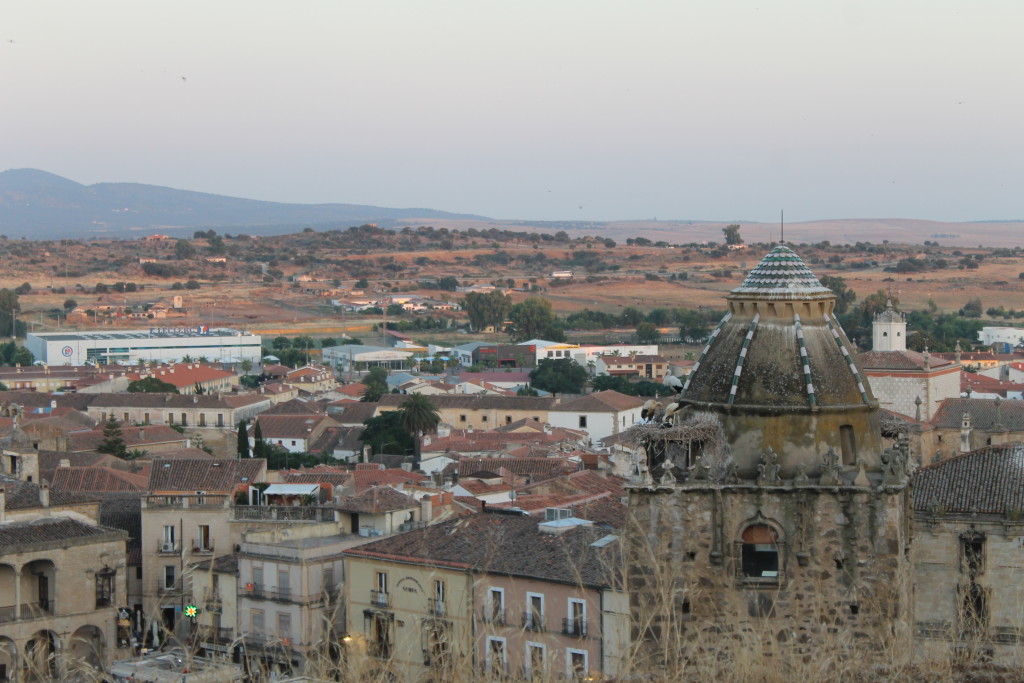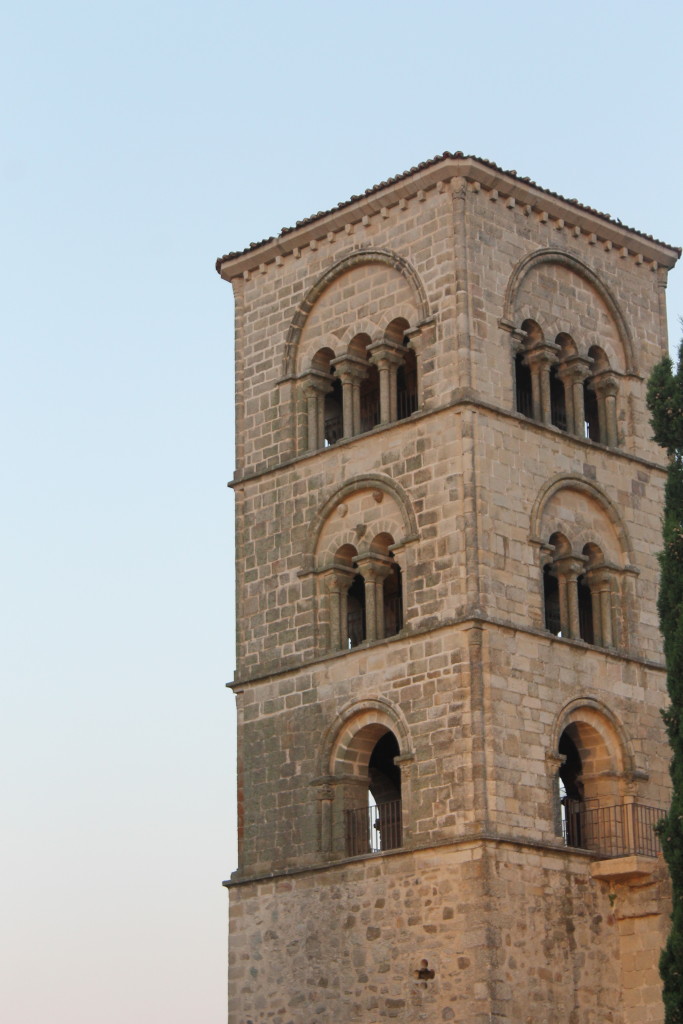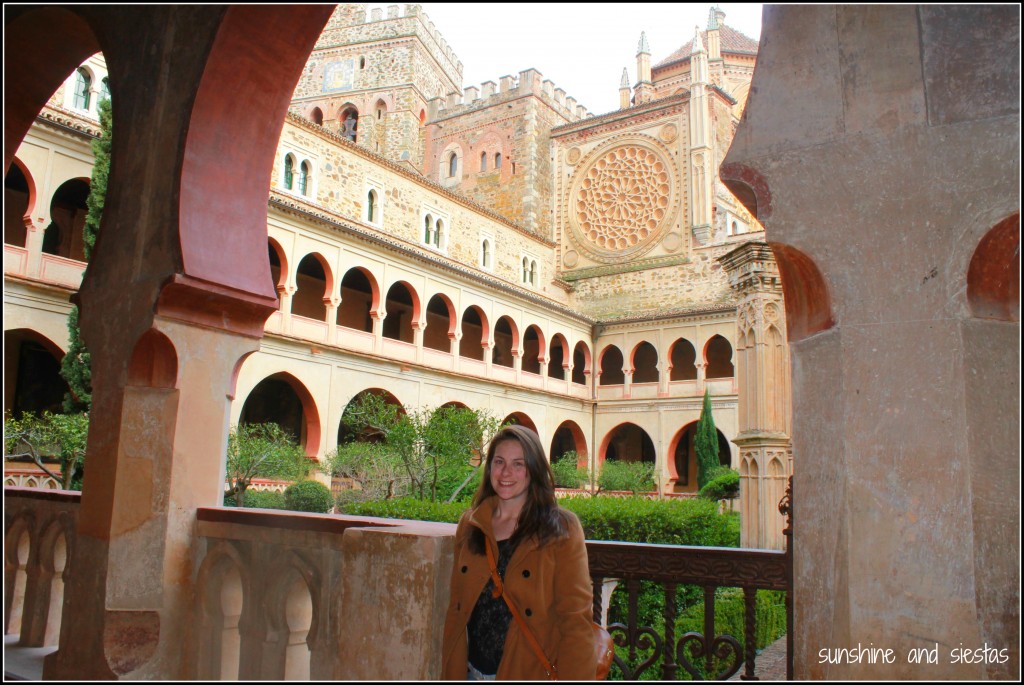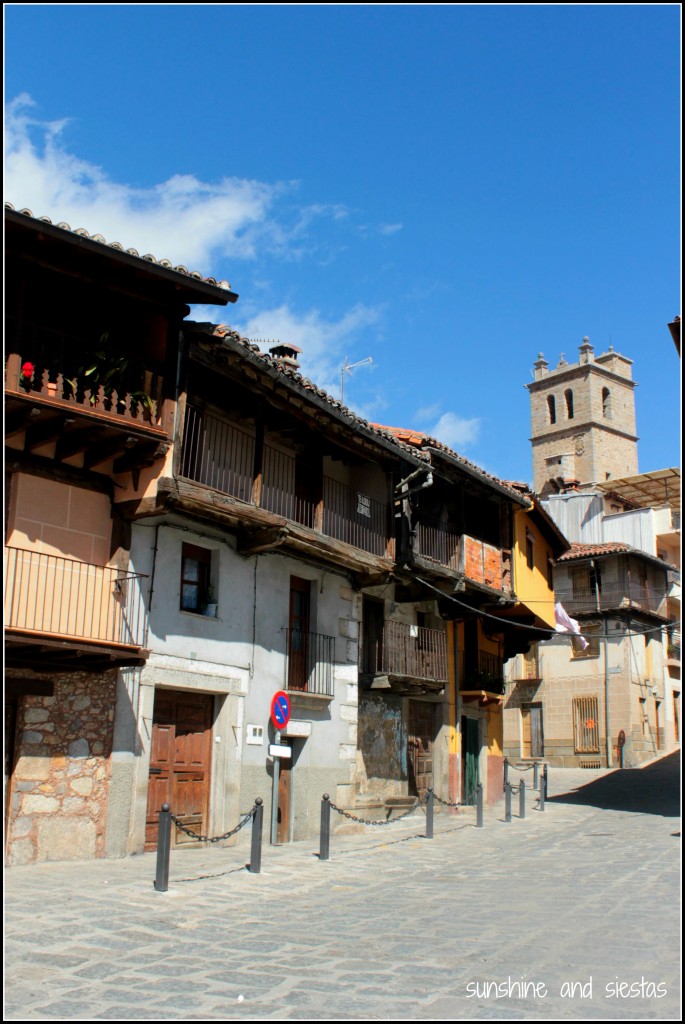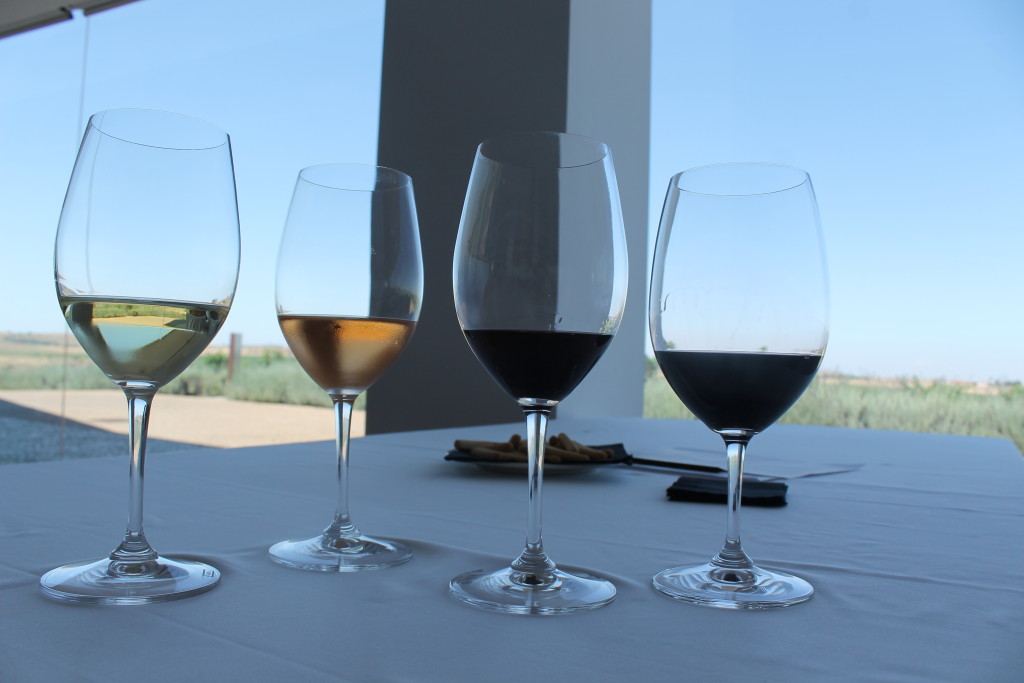It cuts through the exhaust fumes that hiccup from a bus, from the poop left by a horse stalling at an empty carriage in the shade of an orange tree. The azahar is blooming, the de facto sign of springtime in Seville.

The midday bells are about the shrill from the Giralda. I duck into shady Plaza Santa Marta, where the overgrown trees send lines of light against whitewashed walls and the stone cross. It’s one of those places on the tourist drag that no one seems to know about, hidden deep in a maze of streets in the city’s old Jewish quarter.

The bells sound, clear and solitary – there are no clipping hooves or megaphones or even cars.
Mateos Gago has been paved over, a pedestrian paradise for whenever it is that the tourists will return. But half of the storefronts sit empty – there are no tourist shops, and only the mainstays of Peregil, Patio San Eloy and Cervecería Giralda, which recently made headlines because of the Arabic hammam found during recent restoration work, are open.
The sevillano Disneyland of Santa Cruz is a ghost town.
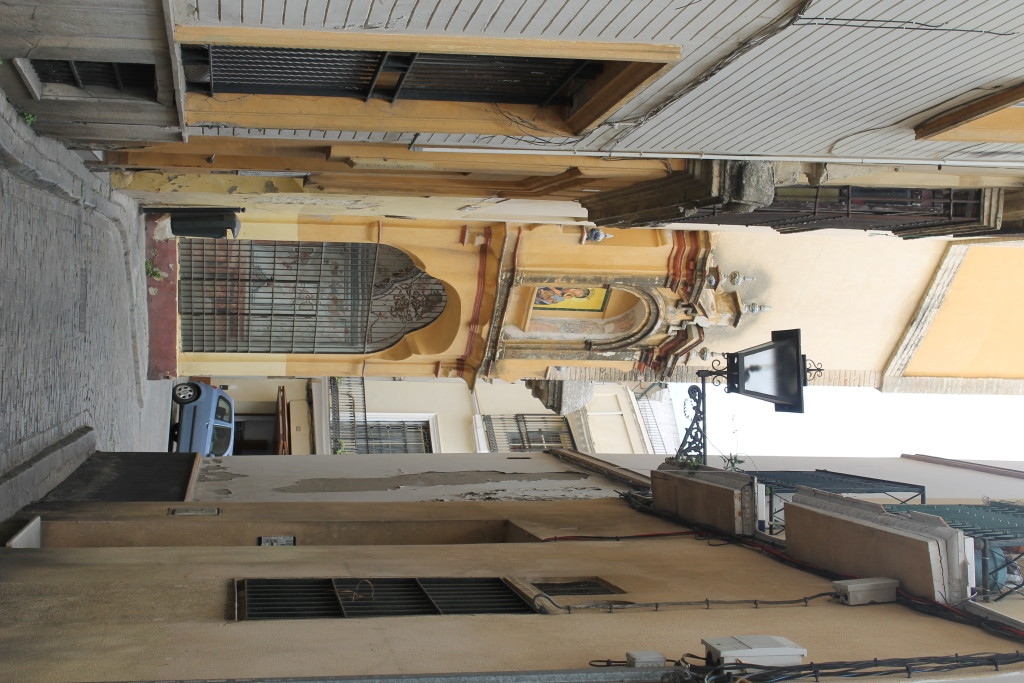
¡Sevilla para los sevillanos! they always say. But then one realizes the extent of destruction that the castle in the sky that the city on the Guadalquivir built. A city built on tourism will fall when the tourists aren’t coming.
Helen and I sit under an awning on the breezy afternoon. It’s been more than a year since we’ve seen one another, so we chatter away in English as if we’d had a coffee together last week.

“Hello my friends!” A sevillano, patillas and gominola and all, smokes a cigarette nearby as I move the stroller out of his way. “No, no, please! Please do the work!” The work is feeding a baby but we humor him as his wife, above us on the first floor, shouts down that his English is shit. “You like my city?”
I point out that he’s wearing a mask emblazoned by the flag of Extremadura with “extremeño” embroidered (of course it’s embroidered) on one side. Helen points out that we’re locals.
He looks as though he’s been sweating on the only cool afternoon we’ve seen in the city this month but starts in on his life story: an extremeño whose family sells pork products to many of the tourist-catering eateries on Mateos Gago. Judging by how empty those bars are, I can imagine he’s had a tough year.

But he continues exuberantly, listing off his wares as if he were entertaining a moonstruck guiri over a cervecita in Plaza Salvador: “…sausage, ham with the black foot, white wine, the sweet and the dry, whateveryoulikeeh!…”
Seville has succumb in the last dozen years. Menus are in English (and French, and Italian, and German). Souvenir shops have elbowed out the neighborhood staples. A city that prides itself on lo castizo y lo popular is becoming a place where you can hear a puño of languages on any given street of Barrio Sant Cruz. In my early days, hearing English was a momento for rejoicing, not eye rolling.
Triana and a great number of its mainstays have weathered the pandemic that brought the world to a near standstill. El Centro has not.
El torero. La flamenca con la guitarra. Ese es el imagen que vendemos a los extranjeros. Es lo que les llama la atención. The guide at Casa Fabiola doesn’t realize that the last to join her 12:30 tour is extranjera as she takes us through the Fundación Bellver pieces painted by foreign artists. The bullfighter. The flamenco dancer with a guitar. That is the image we sell to foreigners. This is what gets their attention.

Maybe it’s alegría, it’s joie de vivre that you should be selling us. Where are noontime libation is taken in a bar that once housed an Arabic bath. Where sobremesa is a way of life. Where a city sealed off to the world (and anyone outside of the province for the time being) is both a death sentence and a nirvana for locals.
I breathe in the azahar once more. Like the empty streets of Santa Cruz, I know it is fleeting.

